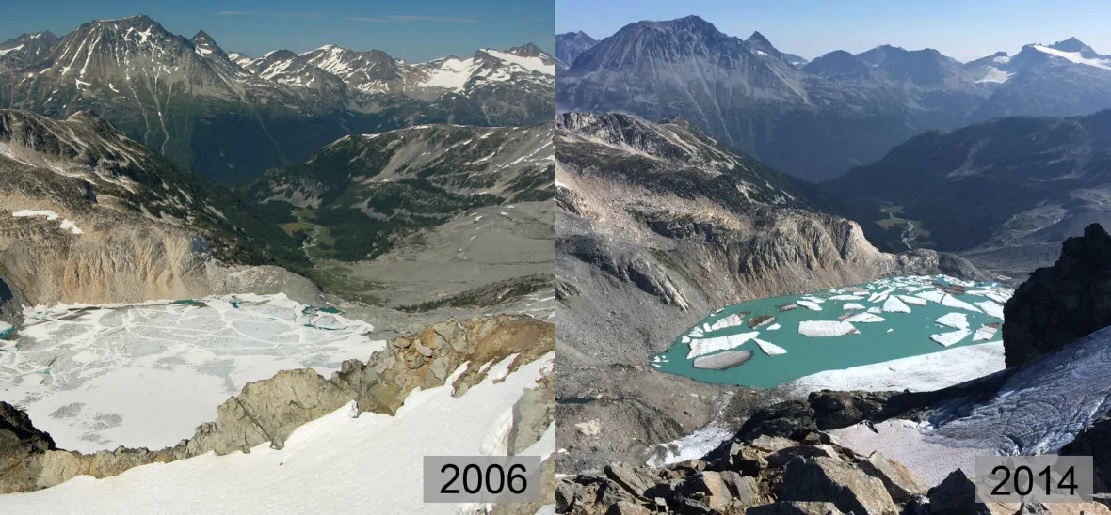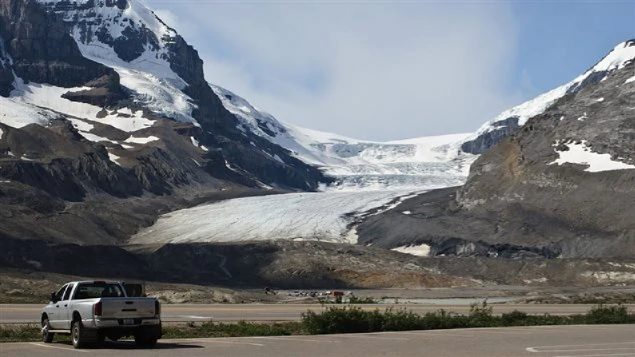An international study using 3D satellite mapping shows an “enormous” increase in melt rates and loss of mass of glaciers in the past few years according to the lead author. It is the first study of the world’s glaciers distinct from ice sheets and their glaciers such as in Greenland and Antarctica, and found that the world’s glaciers are losing mass at an accelerated rate.
Comparing annual data from the period 2000 to 2004 against the period 2015-2019 they determined that glaciers were losing 78 billion more tons of mass per year now than during the earlier period.

The Decker Glacier at Whistler B.C. shown left in July 2006, and right in Aug 2014 (photo Jason Krupa, composite by CBC)
It also noted that glacier loss was greater in Alaska and Canada than elsewhere, and that in addition to thinning of the glaciers, the water loss from North American glaciers represents almost a quarter (21%) of sea level rise since 2000,
The study involved researchers and computers from the U.S,, Canada, University of Ulster, University of Oslo, ETH in Zurich, and University of Toulouse. The findings were published in the April 26 edition of the science journal Nature, under the title ‘Accelerated global glacier mass loss in the early twenty-first century’ (abstract here).

Imaging of the mass loss showing changes in the elevation of the ice of the Ha-Iltzuk Icefield in British Columbia (UNBC- Hakai Institute)
The study was led bye Romain Hugonnet, a glaciologist at ETH Zurich and the University of Toulouse in France, and formerly of the University of Northern British Columbia. Using various supercomputers from the several institutions it measured elevation changes of the world 220,000 glaciers. The supercomputer at UNBC and Hakai Institute constructed elevation models from over 440,000 satellite images from the ASTER system aboard the U.S. ‘Terra’ satellite.
Researcher Lonnie Thompson of Ohio State University said the new study painted an “alarming picture.” The study notes that glacier loss will be of increasing concern for regions dependent of water from glacier melt such as India, and that sea level rise will also become an increasing concern this century
additional information – sources
- University Northern B.C.: Apr 28/21: UNBC, Hakai Institute supercomputer measures global glacier change
- NASA- JPL: ASTER: Advanced Spaceborne Thermal Emission and Reflection Radiometer
- Associated Press (NBC News): Apr 28/21: Satellites show world’s glaciers melting faster than ever
- Forbes: May 17/17: Tnace: Glacier National Park may need to be renamed: Will soon have no glaciers







For reasons beyond our control, and for an undetermined period of time, our comment section is now closed. However, our social networks remain open to your contributions.